The French Development Agency (AFD) published the first report of its project evaluations. Discover here the case studies carried out over the 2017-2018 period, at the core of an initiative designed to improve the efficiency of AFD's action.
0

0

The French Development Agency (AFD) published the first report of its project evaluations. Discover here the case studies carried out over the 2017-2018 period, at the core of an initiative designed to improve the efficiency of AFD's action.
Pour la publication de son premier rapport des évaluations, découvrez les temps forts de l’évaluation
2017-2018
“AFD is the French development policy platform. Creating a platform allows everyone to benefit from evaluation in order to build together, with humility and ambition, a world in common.”
Rémy Rioux, Chief executive officer, AFD
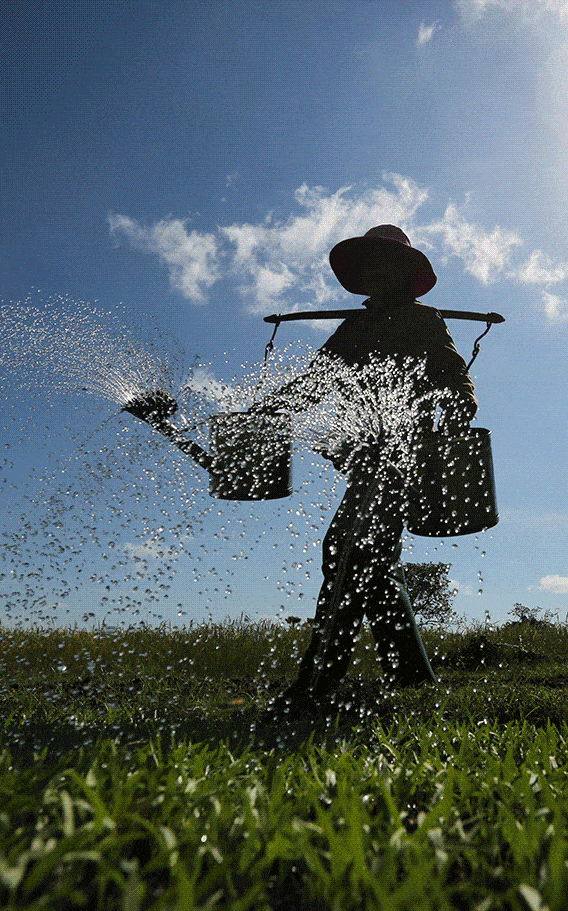

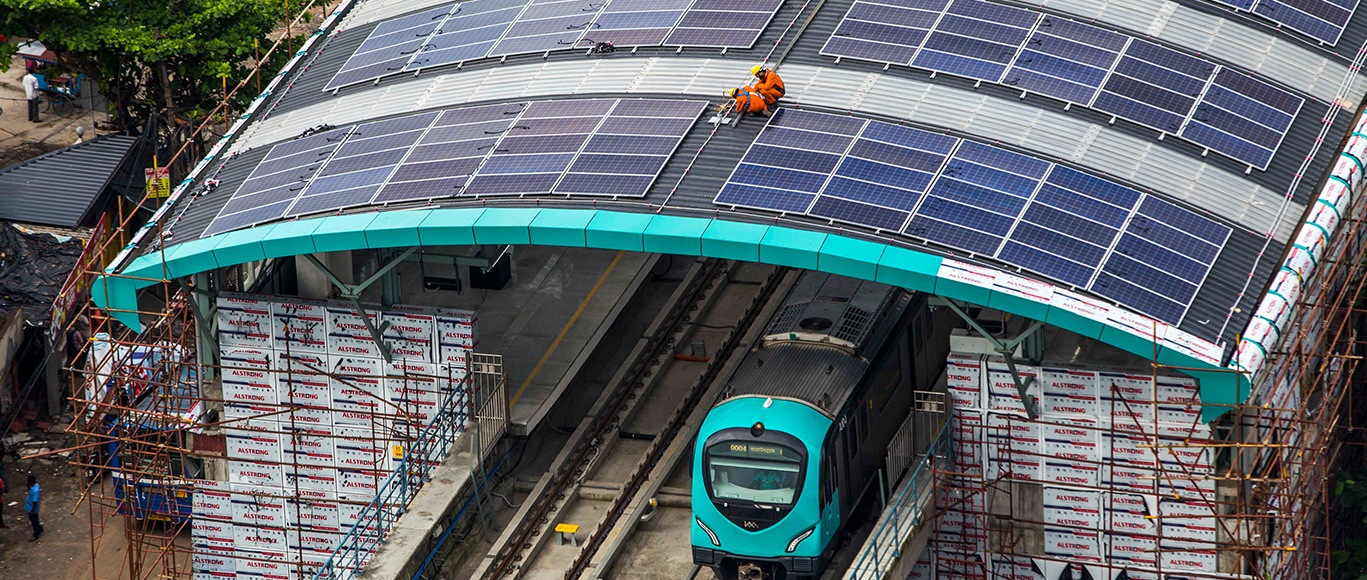
2017-2018
Evaluations in a nutshell
What exactly are AFD evaluations?
Buoyed by a growing interest from government, parliamentarians and AFD management, evaluation has been substantially bolstered over the last two years. The Evaluation and Learning Department has developed new forms of support for operational teams (statistical analyses, monitoring and evaluation tools and lessons learnt), while the number of AFD evaluation officers has almost doubled from 10 to 17. A growing number of evaluations are presented to the Board of Directors every year, as and when requested.
2017–2018 in figures
As an official development assistance platform, AFD produces a range of evaluations to respond to the challenges of learning and accountability.
sectoral, thematic and strategic evaluations


project evaluations covering 68 projects




of completed projects evaluated is our commitment for 2020
knowledge capitalisation studies


What’s the point of evaluations?
Interviews with partners and operational staff







Share a common
vision among different stakeholders
Instantly actionable
analyses and operational recommendations
AFD and KfW face similar
challenges in their support to protected areas
Create a space for dialogue
and exchange of views among
all stakeholders
The only chance a project manager
gets to analyze a project from
the identification stage through
to completion
Assessing the results of a policy, steering its implementation
and extending its financing
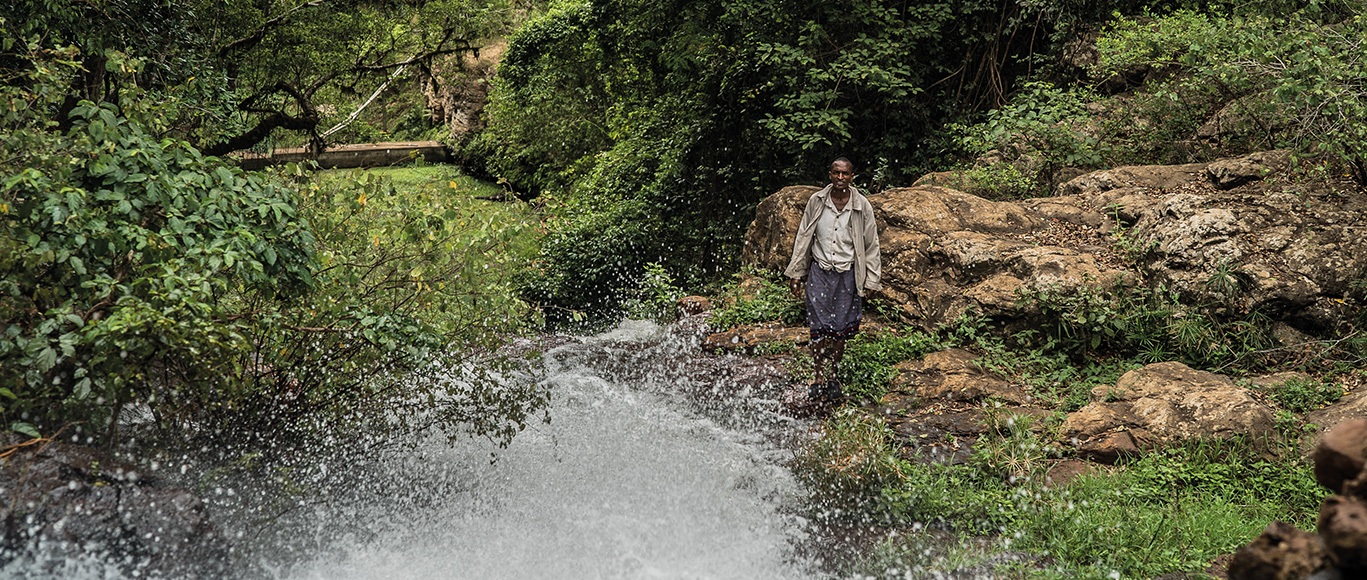
Biodiversity & Development?

Why is it so difficult to implement biodiversity protection given that it has been a key component of international discussions and commitments for several years now? The evaluation results of projects implemented in many countries are instructive. As the Aichi 2010 targets come up for revision by the international community at the next Conference of the Parties (COP 15) in 2020, they outline potential answers to what works and does not work in the area of biodiversity protection, and solutions to be implemented. Many points to ponder in the reflections underway and the forthcoming debates.
The major biodiversity issues
Ecosystems are changing faster than at any other time in human history.
of the world's poorest communities live in rural
areas and depend on biodiversity itself for their survival and well-being.
of animal and plant species are threatened by extinction
of terrestrial ecosystem areas and 7% of marine ecosystems have protected status.
endangered animal species in 2018. Of these species, 40% of amphibians, 14% of birds and 25% of mammals are facing the threat of global extinction. This is also the case for 33% of reef-building corals and 34% of conifers.
The Aichi biodiversity targets

Global leaders once again convened in October 2010 in Nagoya, Japan, during the tenth Conference of the Parties (COP 10) of the CBD. The objective? To negotiate a new global agreement to preserve nature. They then adopted the strategic plan for biodiversity and 20 targets (Aichi Biodiversity Targets) for the 2011–2020 period. The latter form the framework of action for all countries and stakeholders in order to protect biodiversity and improve the advantages for communities until 2020. These 20 objectives are structured around 5 strategic goals.
The next CBD Conference of the Parties (COP 15) will take place in China in November 2020. It will report on the progress made since the adoption of the Aichi Targets and set a new direction for the future. With just a few months to go, it appears that only 4 targets will be reached: ratification of the Nagoya Protocol, update of national biodiversity plans and an increase in terrestrial and marine protected areas. It is important to commend this progress, even though the stated ambitions of the international community are far from being achieved overall.
• Key take-aways from AFD-led evaluations: our 7 recommendations
The evaluation of 15 years of biodiversity interventions may help to shed light on two important themes in the 2019 international negotiations and at COP 15 in China in 2020: achieving conservation and development objectives for protected areas and mainstreaming biodiversity into development policies and programmes across all sectors and in a cross-cutting manner.

Address the underlying causes of biodiversity loss by mainstreaming biodiversity across government and society

Reduce the direct pressures on biodiversity and promote sustainable use

Improve the state of biodiversity by safeguarding ecosystems, species and genetic diversity

Enhance the benefits for all from biodiversity and ecosystem services (the Nagoya Protocol targets equal access and the sharing of genetic resource benefits)

Enhance implementation through participatory planning, knowledge management and capacity building
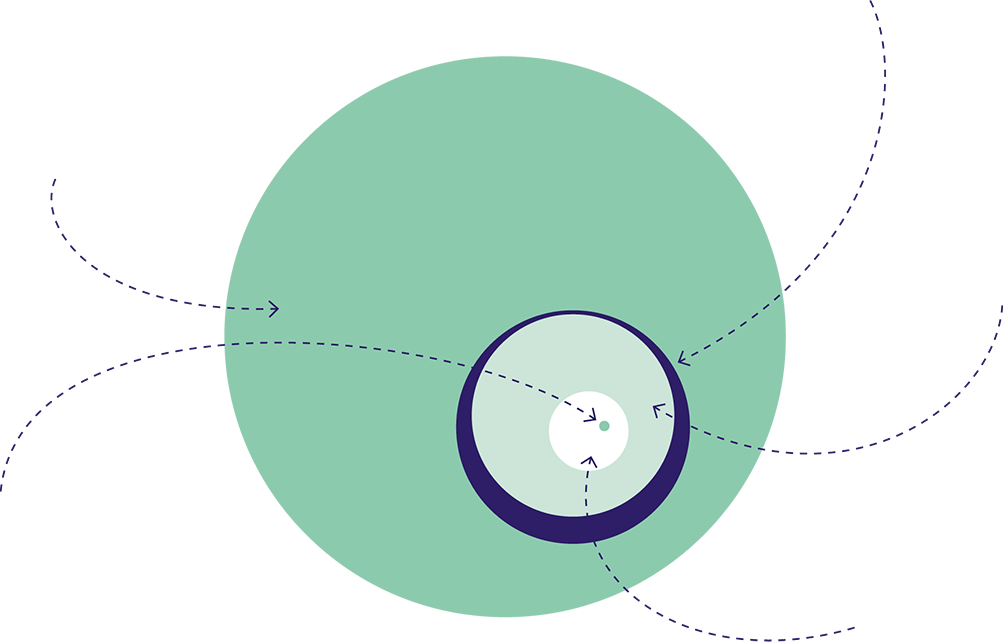
What was the funding for biodiversity conservation in 2010?
(Source: Parker, C., Cranford, M., Oakes, N., Leggett, M. ed., 2012. The Little Biodiversity Finance Book, Global Canopy Programme ; Oxford.)
Global needs
US$300-400 billion a year are
needed to fund the protection of ecosystems across the planet
The reality of global funding
US$52 billion a year of total annual funding
Public funds
US$39 billion a year of total annual public funding
Global ODA
US$6 billion a year of official development assistance for biodiversity
(8 bn in 2015–2016)
AFD
US$0.1 billion a year of AFD funding (0.3 over 2013–2017)

Protected areas where conservation of biodiversity dovetails with development

To systematize baselines and monitoring–evaluation
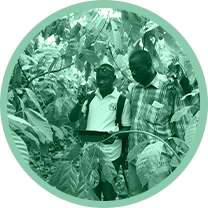
To adapt financial tools
to strategic needs
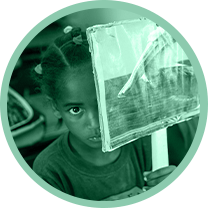
Back policies that
mainstream biodiversity

To better monitor the financial commitments for this objective

To develop interventions with biodiversity co-benefits

To set verifiable objectives and monitor performance
Heading for COP 15 in China


What is France doing?
In this international context, France has positioned itself on several key objectives of the Convention on Biological Diversity, which it embedded in its National Biodiversity Strategy (2011–2020). Find out more.
• Foster, enhance and share a nature-oriented culture
• Reinforce mobilisation and citizen-based initiatives
• Turn biodiversity into a positive issue for decision-makers
• Preserve species and their diversity and build green infrastructure
• Elaborate the French National Biodiversity Strategy
(2011–2020).
France has contributed to the Aichi Targets through specifically targeted support on several issues in which it has an interest and expertise:
• the fight against poaching and the trafficking of endangered species,
• the protection of coral reefs and critical ecosystems.
How does AFD contribute?
Under the international component of France’s National Biodiversity Strategy (NBS), AFD takes action alongside research bodies, decentralised cooperation, civil society organisations and various companies. It began funding biodiversity conservation projects in the early 2000s. It thus operates within the international scope of the NBS, which aims to preserve, restore and increase living diversity. In 2013, AFD’s Biodiversity Strategic Intervention Framework set an ambitious objective: double its financial commitments in favour of biodiversity over the 2013–2016 period, compared to 2006–2010, across all of the Group’s activities.
Can we mainstream biodiversity
into all projects?
Evaluation results
How can a donor support the transformative changes to the global economy called for by the recent report by the Intergovernmental Science-Policy Platform on Biodiversity and Ecosystem Services (IPBES)? Conserving ecosystems while also ensuring socioeconomic benefits for local communities is a key concern for AFD. There is no “good” development if these two dimensions are not reconciled. No good development without positive impacts on– or at least no harm to – ecosystems. Inclusive and responsible development must be considered and built in conjunction with ecosystems.
Mindful of this, AFD adopted a Cross-cutting Intervention Frameworks (CIF) for biodiversity in 2013. The CIF’s second objective targeted the mainstreaming of biodiversity into all AFD development policies The achievement of this objective has been evaluated.
+ Read more

Evaluation of the Second Objective of the Biodiversity Cross-cutting Intervention Framework (2013–2017)

Reconciling biodiversity
conservation and development?
To what extent is it possible to achieve biodiversity conservation objectives while meeting the socioeconomic development needs of local communities? While the concomitant achievement of both objectives is a central concern for the CBD – which will once again be discussed at the next Conference of the Parties in China in 2020 – the wherewithal remains up for debate. Lessons learnt from an evaluation of 19 support projects for protected areas.
+ Read more

Evaluation of the Contributions of AFD "Protected Areas" Interventions to Conservation and Development (2000-2017)



Digital technology, a magic wand
for evaluations?
Evaluators are unanimous: it is difficult to establish a baseline for the initial situation, then monitor changes to biodiversity to assess the results and impacts of an intervention. How can digital technology help to provide solutions? Claire Zanuso, research and evaluation officer at AFD, and Julien Ancelin, geographical information systems administrator at the French National Institute for Agricultural Research (INRA) have developed the mobile digital mapping tool, Geopoppy, to help improve the monitoring and and evaluation potential of a project. Feedback on GeoPoppy.
+ Read more

Ex-post Written and Audiovisual Evaluation of the Limpopo National Park Development Project
Rehabilitating Limpopo
National Park
Filmed evaluation is a way of disseminating the results of an evaluation to a wider audience. A written and filmed evaluation of AFD’s support to Limpopo National Park was carried out in Mozambique in 2016, covering a 10-year period. Created in 2002, the Great Limpopo Transfrontier Park is a “Peace” park, encompassing Kruger National Park in South Africa, Limpopo Nation Park in Mozambique and Gonarezhou National Park in Zimbabwe.
+ Read the case study “Rehabilitating Limpopo National Park”
+ Read the full article “Evaluating through writing and image”


€1.3bn
,
of commitments authorised in 2018
Focus on policy-based loans: boosting the potential of a booming instrument
The evaluations carried out in 2017 and 2018 show that policy-based loans are an ambitious and potentially powerful tool that enables AFD to foreground its strengths. However, AFD needs to improve its appraisal and implementation modalities to guarantee the quality of its support.
FOCUS ON PPL
+ Read the full article



Focus on Vietnam: Adapting to a rapidly changing country.
In Vietnam, over the past ten years, AFD interventions focussed more strongly on climate change and support for urban development. The evaluations of policy-based loans, specific projects and geographies have provided valuable input for orienting country strategy and helping practices to evolve.
+ Read the full
FOCUS ON VIETNAM

Evaluation of French development
aid in Vietnam (2005–2015).



Agence Française de Développement (AFD) finances, supports and accelerates the transition to a fairer and more sustainable world. Climate, biodiversity, peace, education, urban development, health, governance... : our teams are involved in more than 4,000 projects, which are having a major impact in 115 countries and French overseas departments.
We contribute to France's and the French people's commitment to the Sustainable Development Goals (SDG) across the developing world.
Find out more
Evaluations
Report 2017–2018

Protected areas
Dovetailing biodiversity
conservation and development
is the challenge met by the
19 projects supporting the implementation or reinforcement
of protected areas, underway
since the early 2000s.
+ Find out more
Policy-based loans
The potential of this burgeoning
financial instrument and the areas for improvement to enhance the quality of its support have been studied in around 10 evaluations in 8 countries.
+ Find out more
Limpopo
National Park
Supporting the development
of communities living in the vicinity of Limpopo National Park is the “inclusive” approach that AFD adopted in order
to combine ecological conservation and economic development. It is assessed through a written and filmed evaluation.
+ Find out more
FISONG
How can the benefits of biodiversity be better shared with village communities?
The experience of actors
in close proximity to communities, such as nongovernmental organisations, is under analysis in three projects
in Madagascar, Niger
and Tanzania.
+ Find out more
Vietnam
In a rapidly changing country, AFD has been adapting for
ten years and refocused its interventions around climate change and support for urban development.
+ Find out more
GeoPoppy
This mobile digital mapping tool helps boost the monitoring and evaluation potential of biodiversity projects.
+ Find out more
Biodiversity CIF
The Cross-cutting Intervention Framework (CIF) identifies
the challenges and obstacles
to be overcome so as to better mainstream biodiversity into development policies across
all sectors in the countries
where AFD operates.
+ Find out more







Case studies
2017-2018
















Heading for COP 15 in China
The evaluation of 15 years of biodiversity interventions can help to shed light on two important themes in the 2019 international negotiations and at COP 15 in China in 2020: achieving conservation and development objectives for protected areas and mainstreaming biodiversity into development policies and programmes across all sectors and in a cross-cutting manner.
Protected areas where conservation dovetails with development
The objective shared by the international community translates into various intervention logics in the field. Experience shows that these two outcomes are rarely achieved simultaneously and that one is generally more prominent than the other. However, intervention logics can be improved by adapting the scale of projects to the size of their targeted communities and surface areas, and by tailoring development and conservation actions to the targeted landscape features. Crucially, these development projects need to include actions enabling any pressure exerted on protected areas to be mitigated. Local communities must also be more involved in selecting the development activities. Yet, good feasibility studies and good intervention logics are not enough. What often makes the difference is the quality of the project sponsors and the local project management – and therefore human resources – along with the dynamism of local institutions and the political and institutional will.
To systematize baselines and monitoring–evaluation
Most projects struggle to demonstrate the results and impacts achieved because they do not have baselines prior to project inception or systems to monitor biodiversity and economic outcomes during implementation. It is, however, possible to minimise these difficulties by using open-source digital tools, by applying a robust open data policy to the biodiversity monitoring data and by encouraging participatory scientific monitoring. This enables knowledge to be shared with local stakeholders, while reducing the cost of ensuring the sustainability of the monitoring system.
To adapt financial tools to strategic needs
International donors must tailor their financial tools to the strategic results they want to achieve. Otherwise, they run the risk of conducting a strategy guided rather by what financial resources they can commit and their clients’ demands. Loans have become AFD’s most used instrument for financing biodiversity conservation. The volume of grants has been reduced over the period studied and interventions are now geared in priority to the major emerging countries – to the detriment of the African continent and least developed countries (LDCs). This means there is a real risk that projects will be undertaken in creditworthy countries with satisfactory public finances at the expense of countries with a greater need for them. Grant funding, which is crucial to biodiversity conservation in LDCs and other developing countries, must be maintained and, if possible, increased. Moreover, projects produce better results when an action spans 10 to 15 years, whereas AFD only funds projects over an average of 3 to 5 years. One avenue towards improvement would be to acquire financing instruments that can fund a wider spectrum of activities over significant areas, with interventions being phased in over longer periods of time. One of the evaluations thus recommends implementing a 12-year system with three four-year phases based on multitranche funding.
Back policies that mainstream biodiversity
Mainstreaming biodiversity conservation as a cross-cutting issue implies reducing the negative impacts of interventions not dedicated to conservation (access to drinking water, transport, industry, urbanisation, agriculture, energy and finance). This often requires grant funding for initiatives that provide assistance to contracting authorities – often little mindful of this issue – through policy dialogue, an analysis of their capacity-building needs, and dedicated resources to help them move towards sound environmental standards.
To better monitor the financial commitments for this objective
This means not only that biodiversity co-benefits should be maximised, but also that the financial commitments and results in terms of reducing negative impacts on biodiversity should be counted as aid dedicated to biodiversity mainstreaming. This will give an overall, non-truncated picture of a donor’s financing.
To develop interventions with biodiversity co-benefits
Moving into this field on sectors that are currently sidelined (urban development, transport, energy, education, health, etc.) supposes measuring impacts more effectively, quantifying them in terms of project portfolios and sharing the lessons learnt with the beneficiary countries as part of a high-level political dialogue. Furthermore, strengthening nature-based solutions is an opportunity to obtain both climate and biodiversity co-benefits if we furnish sufficient efforts and resources on impact monitoring.
To set verifiable objectives and monitor performance
As for climate, setting verifiable objectives and giving countries the means to monitor their performance are priorities for developing a “positive agenda” for biodiversity and reaching an ambitious international agreement on biological diversity at the next CBD conference of the parties. The lessons of the Paris Climate Agreement and the recent biodiversity conservation negotiations show that the challenge should enable each country to identify the pressures on biodiversity and make commitments to reduce them. Support for public biodiversity policies backed by AFD could accompany these voluntary approaches.

sectoral, thematic and strategic evaluations
These mostly concern projects within the same sector, sectoral, geographic or cross-cutting strategies such as gender or climate, or financial instruments.
Objectives: improve the quality and implementation of future projects and financial tools, and assist strategic decision-making.
They include impact evaluations conducted using experimental, quasi-experimental and mixed methods.They address the lack of knowledge on the results and impacts of an intervention and give greater insight into the mechanisms linking the intervention and its results and impacts.
Objectives: produce knowledge on key development questions and fuel the international debate on development assistance.
+ See our publications
+ “DRC: In Kinshasa, how an evaluation is put together”
+ “Evaluating our interventions is essential”,
interview with Nathalie Le Denmat
+ “Climate change: assessing our ability to adapt”
+ “To beat cholera, what is most needed is a reliable
drinking water supply”, The Conversation.
+ “What health cover to overcome maternal mortality?”,
The Conversation (in French)
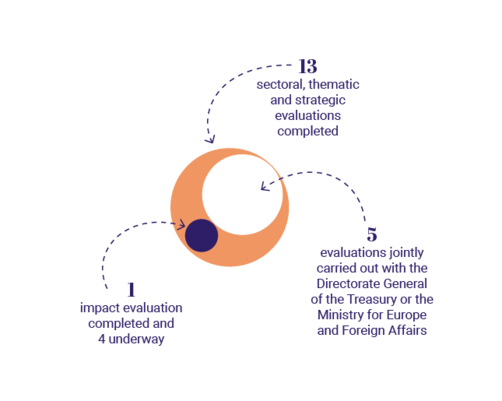


project evaluations,
68 projects covered
These involve most AFD projects and can be conducted midway through a project or after its completion. They are carried out by AFD’s local agencies with methodological support from the Evaluation and Learning Department (EVA) and use qualitative and/or quantitative methods depending on the available data. They sometimes cover several projects in the case of successive project phases or a cluster of similar projects.
Dual objective: fuel the dialogue with partners on project results to promote mutual and continuous learning.
+ See all our publications

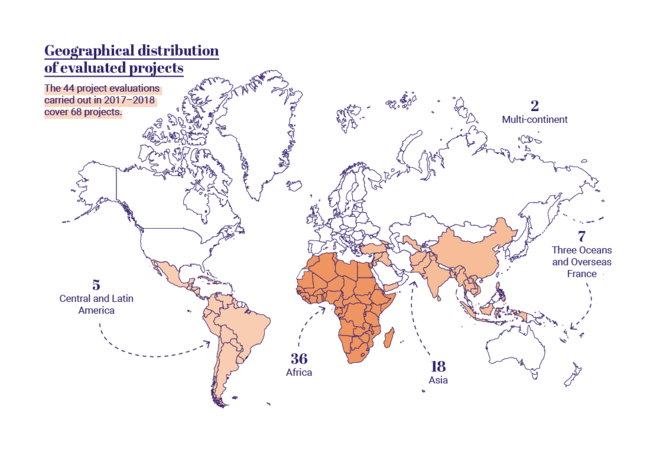

de projets achevés évalués, c’est notre engagement pour 2020
Elles portent sur la plupart des projets de l’AFD et peuvent être réalisées à mi-parcours ou à l’achèvement du projet. Elles sont pilotées par les agences locales de l’AFD avec l’appui méthodologique du département Évaluation et Apprentissage (EVA) et mobilisent des méthodes qualitatives et / ou quantitatives selon les données disponibles. Elles couvrent parfois plusieurs projets quand il s’agit de phases successives ou de grappes de projets similaires.
Double objectif : alimenter le dialogue avec les partenaires sur les résultats des projets pour favoriser un apprentissage mutuel et continu.
+ En savoir + sur les évaluations de projet
+ Retrouver toutes nos publications d’évaluation de projets


knowledge capitalisation studies
These meet a learning objective and are carried out using evaluation findings, analytical reviews, etc.
Priority is given to knowledge capitalisation that encompasses several projects and draws on evaluation findings, analytical reviews, etc.
They use participatory methods such as workshops and focus groups.
Challenge: enable operational teams to take a step back from their practices.
+ Evaluation and transversal capitalisation of the Biodiversity and Development FISONG (in French)
+ Capitalisation of the sanitation chain (in French)
+ Capitalisation of the steps to implement vocational training projects – Case of Tunisia and Morocco (in French)

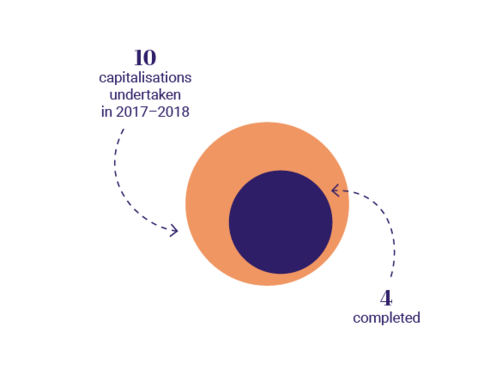

Share a common vision
among different stakeholders
M. Pham VAN TAN - Deputy Director General of the Department of Climate Change under the Ministry for Natural Resources and the Environment, Vietnam.
An evaluation of the Support Program to Respond to Climate Change (SP-RCC) was conducted in 2018. The SP-RCC is a multi-year budget support programme designed to assist the country in formulating and implementing its strategic commitments in the fight against climate change.
“AFD is a historical partner of the SP-RCC programme in Vietnam. The evaluation process has given the government agencies as well as Development Partners an opportunity to look back on the performance of the SP-RCC and to exchange frankly and openly on the lessons learned through the view of independent evaluators.
The SP-RCC is a complex programme gathering different groups of stakeholders. One of the lessons to be drawn from the evaluation is the need for development partners and government agencies to improve communication on the programme in order to share a common vision among different stakeholders.”
+ Evaluation of the Support Programme to Respond
to Climate Change (SP-RCC)

Instantly actionable
analyses and operational
recommendations
Raphaël DE GUERRE - Senior investment officer, AFD Nairobi
One of the first "SUNREF" (Sustainable Use of Natural Resources and Energy Finance) programmes was launched in 2010 in Kenya to boost small- and medium-scale investment in the country’s renewable energy and energy efficiency via credit lines to local partner banks.An evaluation was conducted in 2018.
“From the operational perspective, this evaluation gave us the necessary distance the necessary hindsight to see how the SUNREF program was perceived by the final beneficiaries (project owners) and our partner banks in Kenya.
Valuable information was collected during the second phase of the Kenya project. We were in fact thinking about how to further develop the project’s implementation blueprint. We wanted to leverage impacts by financing more green energy projects, and reinforce the banks’ ownership of green financing. The recommendations of the evaluation helped us to avoid becoming locked into one implementation approach and question our ways of designing the third phase.
The fact that the evaluation was done in-house by AFD evaluators, including a specialist in green credit lines, enabled us to become more effective. In fact, given their knowledge on how AFD operates and their expertise, the interactions with the project team were easier and smoother.
At the end of the process, they formulated analyses and operational recommendations that were actionable directly. For example:
— The introduction of the investment premium instead of a loan rate control mechanism granted by banks to project promoters.
— The structuring of technical assistance in order to broaden the risk analysis carried out by technical assistance beyond investment projects, so as to take better account of the financial soundness of the counterparties and non-financial risks.
— The prioritization of the multiple objectives of the project: transformative effect sought on banks' practices, financing of innovative projects & frontier technologies, financing of a large number of projects, improvement of the regulatory framework, support to project leaders and in particular to SMEs, sector advocacy.”
+ See the evaluation summary – The SUNREF programme
in Kenya – 2010–2017

AFD and KfW face similar
challenges in their support
to protected areas
Martin DORSCHEL - Head of the KfW Operations Evaluation Division
and member of the evaluation reference group* for “protected-area contribution to biodiversity conservation and development” in 2017 and 2018. *Comprises external and AFD experts to monitor and improve consultants’ work
Did you notice any differences between the practices in use at the KfW development bank’s Evaluation Division?
AFD’s evaluation, in which I had the pleasure to participate, differed from those that we typically conduct in two respects. First, KfW primarily evaluates individual projects ex-post, whereas AFD’s evaluation of protected areas covered a large sample from the 2000–2017 portfolio including ongoing and completed projects. Accordingly, KfW’s evaluations have a strong focus on individual development results, whereas AFD’s evaluation allowed for more generally valid conclusions. Secondly, our evaluations are mainly conducted by KfW staff (excluding people involved in implementing the project in question) – a great instrument for internal learning. AFD typically hires consultants to produce external strategic input. AFD’s evaluation was similar to what we call a thematic evaluation or a portfolio review, something we do less frequently. All in all, it was a great experience for me to witness how much value a reference group can add to such a strategic study.
What lessons from this AFD evaluation echo
your own learnings?
Both AFD and KfW seem to face very similar challenges with regard to the sustainable functioning of protected areas. Very few areas can cover their operating costs with tourism revenues. Protected areas need reliable funding and a strong commitment from their respective governments. AFD’s evaluation confirms that conservation is an extremely complex and challenging field for development agencies in general and evaluators in particular. We face similar challenges to AFD, such as missing baseline data, weak analysis of the initial situation, poor definitions of objectives, indicators that are hard to measure.
+ Evaluation of the AFD “Protected Area” conservation and development intervention contributions (2000–2017)

Create a space for dialogue
and exchange of views among
all stakeholders
Ricardo MONCADA SUAREZ - advisor on the national government’s external debt financing strategy at the Republic of Colombia’s Ministry of Finance and Public Credit
In 2013, AFD granted a policy-based loan to the Ministry of Finance and Public Credit of the Republic of Colombia to strengthen its healthcare and social protection system. This intervention was evaluated in 2018.
In your opinion, what are the advantages of the policy-based loan granted by AFD and its stand-out impacts?
For Colombia's Ministry of Finance and Public Credit, the experience of the policy-based loan with AFD has been a great success. I'd like to highlight one of its main features: the predictability of the amounts and disbursements when the initially agreed indicators are respected. If we compare them with investment loans, policy-based loans are easier to structure and the risk of non-compliance with the commitments is lower. All this is possible if the supported policy is robust and implemented by quality operators able to make the most of technical cooperation. This technical support has proven valuable inasmuch as it enabled France to provide us with its knowledge and expertise in an open and constructive way. The whole operation was developed as part of a collaborative, flexible and quality relationship with AFD.
What have the benefits of the evaluation process been?
The evaluation of the policy-based loan, which supports improvements to the Colombian social protection and healthcare system, was immensely useful to us and the reason why we became directly and actively involved in it. Our objective, as the Ministry of Finance, was to ascertain exactly how this support was perceived and what concerns and expectations it had created among the various stakeholders. We now have a clearer idea of how to better prepare and implement these policy-based loans. The information gathered has also allowed us to work on clarifying the roles and expectations of each stakeholder, as well as the requirements that need to be complied with for this instrument. Finally, it is important to underline that the evaluation, conducted by an external consultant, has helped to create a space for dialogue and exchange of views between all stakeholders, a space that has made it easier to identify the main lessons learnt from this experience.
+ Colombia – Evaluation of the programme for reinforcement of the Colombian healthcare system
(in Spanish)
+ Watch the video in the policy-based loans section
+ Policy based-loans: Boosting the potential of a booming instrument (lien vers l’article du rapport 2017-2018)

The only chance a project manager gets to analyse a project from
the identification stage through
to completion
Olivier GILARD - Sanitation project manager at AFD, evaluator of the Drinking Water Supply Programme in the Mekong Delta
Peer evaluation is carried out by a project manager not involved in the design and monitoring of the evaluated project.
How did the project you evaluated meet the urban development challenges in Vietnam?
Given the country’s demographic growth and fast-paced urbanisation over the last 30 years, colossal investment is needed to develop services that are increasingly in demand from communities. Initially identified as the first in a series, this project was well-aligned with this issue.
What are the results of this project?
The investments in the 4 provinces and 6 urban centres in the Mekong Delta have undoubtedly helped to extend the coverage of the drinking water supply service. This has benefited 72,000 households – no small number! This first painstaking project has unfortunately not been renewed.
What have you gleaned from this first peer evaluation?
External evaluations are sometimes disappointing because the consultants often find it hard to identify the most relevant information and assess in detail AFD’s precise role in the factors of success or failure. Peer evaluation is an easier way of undertaking this “self-criticism”. The exercise is fascinating! It does require substantial involvement but it helps to improve the quality of the new projects I'm setting up. In some ways, it's the only chance a project manager gets to analyse a project from the identification stage through to completion.
+ Evaluation of the programme to improve drinking water supply in the Mekong Delta

Assessing the results of a policy, steering its implementation and extending its financing
Alexandre BERTHON-DUMURGIER - Project manager in the Education, Training and Employment Division
AFD supports the Republic of Côte d’Ivoire’s education and training plan (2016–2025). A mid-term evaluation of the middle-school policy was carried out to assess the initial results and to steer its strategy of implementation, and it also contributed to financing a new operation.
“On several occasions, the project team drew on the mid-term evaluation of Côte d’Ivoire’s middle-school policy. The first evaluation results, shared with the Côte d’Ivoire government in July 2018, allowed us to highlight the critical role of the management teaching staff (recruitment, training, allocation and payment of employees) in the success of the middle-school policy.
This issue was then set as a priority by the national authorities. It thus allowed AFD to define a new intervention in favor of middle-school in the form of a €30 million policy-based loan approved in December 2018. A little later in December 2018, the draft recommendations from the evaluation were presented in Abidjan and further mobilised the national managers on middle-school policy challenges.
Accordingly, an implementation strategy will be drawn up in the very near future, structured around two of the evaluation’s recommendations. In line with the lessons learnt from the universal primary education completion strategies, these recomendation recall the importance of phasing-in middle-school policy over time in order to combine quantitative expansion and quality of teaching, and emphasise the importance of defining and implementing a monitoring–evaluation and supervision system of this policy by mobilising the education authorities' IT and management system.”
+ Panorama 2019 – AFD Group’s annual report “A Policy for Middle Schools in RCI: the Challenge of managing teaching staff”

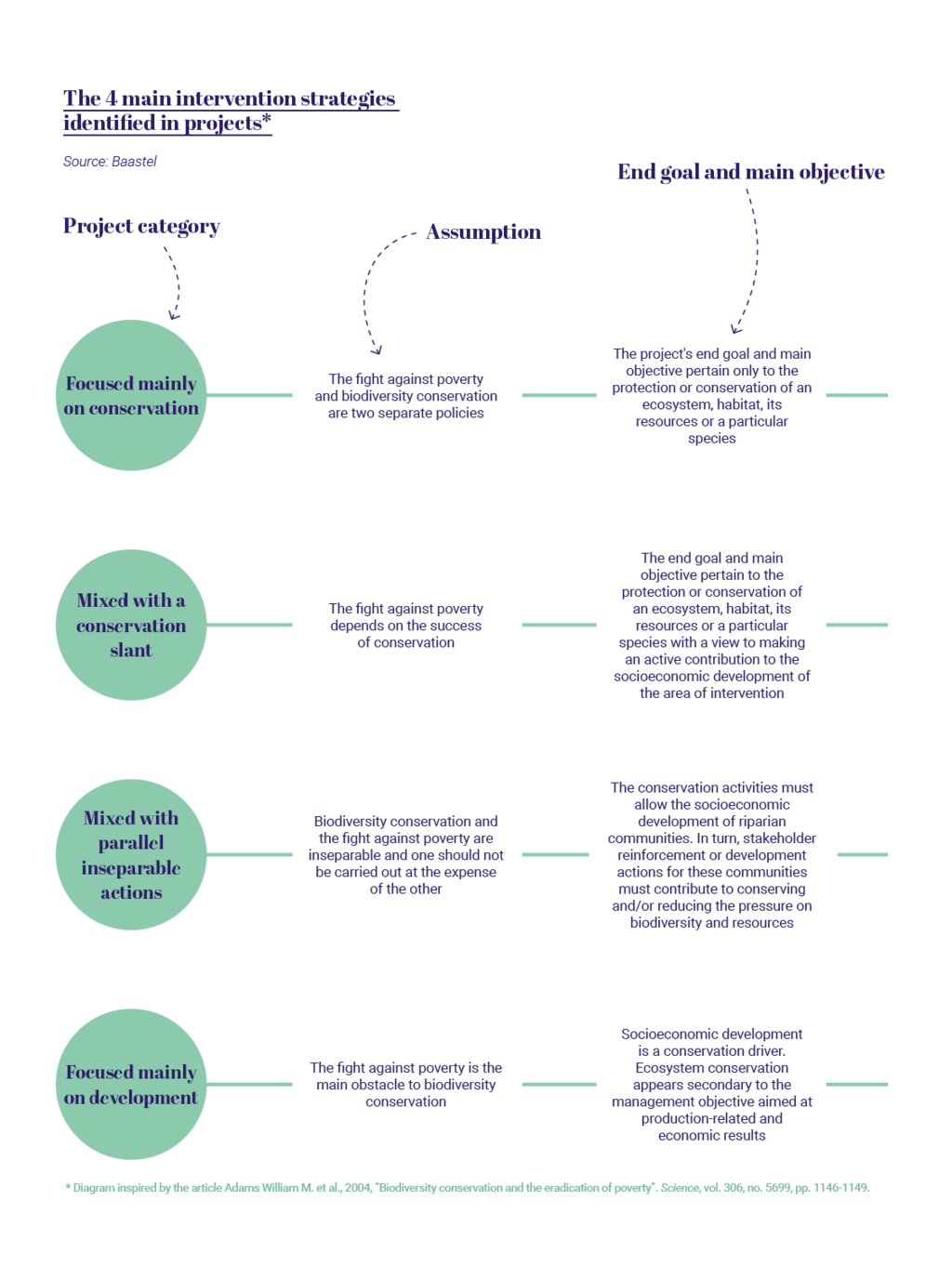


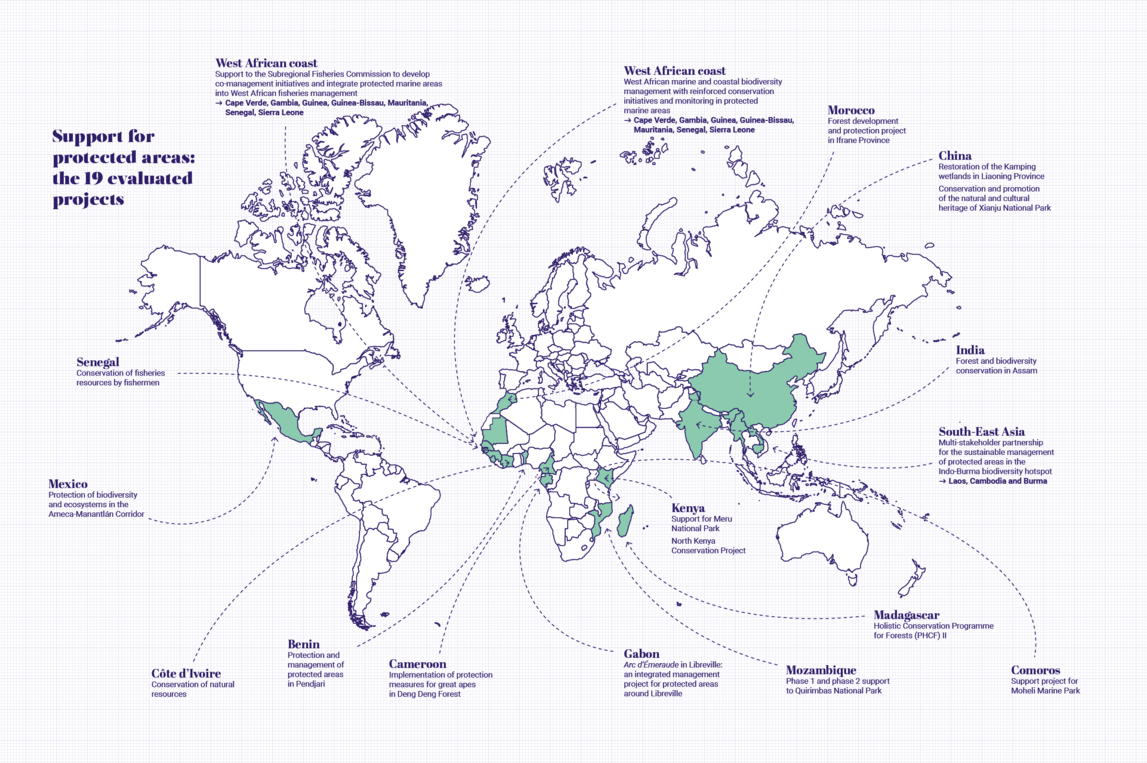

GeoPoppy, an innovative solution
GeoPoppy is an innovative data collection solution developed with free software.
Initially developed by Julien Ancelin from INRA to monitor poppy fields in France, GeoPoppy is a mobile digital mapping tool that helps to improve the monitoring and evaluation potential of a project. It is a user-friendly and affordable geographic information system on a digital tablet. Once the hardware has been purchased, GeoPoppy can be used with no charge or restrictions on registration or user numbers.
Tested with the help of CartONG on a REDD+ sustainable forest management project in Côte d’Ivoire with the NGO Nitidæ, it can precisely monitor the development of cultivated and wooded areas. GeoPoppy was adapted to this pilot project with support from the AFD evaluation teams.
The first results were shared during the GeONG conference – one step further in a support strategy for the open data community.
Based on free, no-charge software (PostgreSQL, QGIS and LiZMap), GeoPoppy can also be used by other actors (NGOs, local communities, businesses, etc.).


